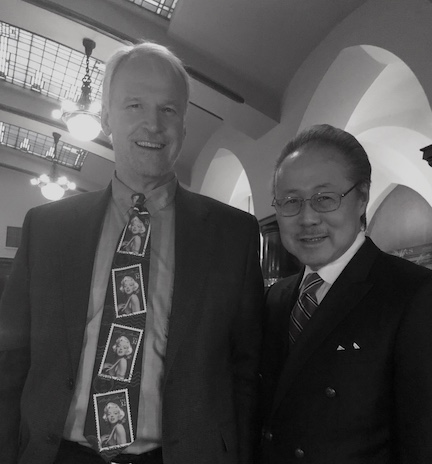
The idea of ‘work hard’ sounds like a Pep Talk.
“First we work, then we work harder, and if the job’s not done, we come back and do it again until it’s finished.”
It works in a sports environment better than an office meeting. Why is that?
To qualify for a Hard Work tag, the job needs to be measurable, scalable, and efficient.
If the job is routing paper from one in-box to the next until it’s signed off by a department manager, how is the flow set?
For instance, in an office of five, with three detached long term employees, one new guy, and an office manager who lacks the skill for the job, but got hired based on a friend’s recommendation, what could go wrong?
Old guys to new guy: We know she’s not quite right for our kind of work, but she’ll come around. Let’s help her. If you could do your job, and her job, that would be great.
Two jobs at the same time is hard work. Add the hurdles of hurt feelings and career ambition to the load, while watching loungers pretend to work hard. It could become toxic with a double work load.
What if it was a blue collar production job, like pulling the green chain in a veneer mill? Like any other production line, the work pace is determined by the person controlling the speed of the chain.
If you keep up on a slow-down, you’re doing fine; if you can keep up on a fast line, you may have a mill career. Just remember not to answer any questions about a dancing sister.
Hard Work Needs Help
When highly skilled professionals change their specialty focus, their needs change. Support staff becomes more important. Enthusiasm gets ramped up.
Take a freelance team of consultants hired to do research in support of grant applications. It’s harder than it sounds.
They are all highly qualified for a specific task. One of them was a Ph.D. entomologist, the bug man. When a certain sector of business needs an upgrade from the ground up, bring in the buggy. My Grandpa did the same kind of work during WWII in the Pacific.
The scientist used to be a lab research guy before going into the freelance field. Before that he’d been an Army Captain directing insect repellant over planned firebases on remote jungle hills.
How did he get into that sort of work?
“It’s a funny thing about science guys. If we have the right advisor, we get directed toward a field that plays to our strengths. I love science, took a ton of undergrad science, and planned on taking more.
“It was a good plan since the Vietnam War draft was picking up people like me, but who dropped out. So I graduated, and went directly to graduate school for a masters, finished that, and enrolled in a doctoral program. I planned on staying in school until the draft ended.
“I left school with big degrees and a bright future. Then I got drafted. And that’s not the worst. After I processed in I found out I was a only captain, the same rank as guys with only a masters. That chaffed me.
“When they asked for volunteers to prepare advanced bases, I was the guy. We’d go out with a full load of chemicals and spray as low as we could go. If we got shot at, we flew higher. We were there to kill bugs, not crash.”
A Consulting Captain
He was a fun guy. I showed him around town. He met my wife. They had lots to talk about.
“Once I started consulting,” he said, “the hardest part was documentation. In the lab I had a full staff logging data. Now it’s me. The reason I get more work than other guys is my documentation. It’s like medical work. We have an environment violated by an outside threat; we identify the threat, track it, and kill it.
“Like killing bugs in textiles. You freeze them once to get the live critters, then freeze again to kill the eggs. In between each step I take sample and pictures and comparisons. It creates a bigger picture to show potential weakness.”
He probably knew every thing on this list:
The U.S. had a rainbow of chemicals at their disposal. They were nicknamed according to the color on the barrels in which they were shipped. (Agent Orange didn’t appear orange, though it looked like that to Pilsch.) Once Operation Ranch Hand began, around 20 million gallons of Agents Green, Pink, Purple, Blue, White, Orange, Orange II, Orange III, and Super Orange were sprayed over South Vietnam. The chemicals were produced by companies like DOW Chemical, Monsanto, and Hercules, Inc.
I like smart guys who know their role. Sometimes it’s hard work to stay tuned in.


